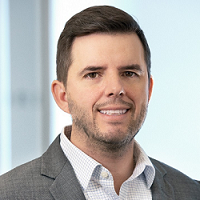 By Tony Willoughby, President, Catalyst Health Group
By Tony Willoughby, President, Catalyst Health Group
Twitter: @CatalystHG
It’s just human nature in many ways: We often know what we need to do, but we struggle to take all the steps at exactly the right time to get to the outcome we desire. Such is the case with medication adherence. We’re prescribed medication. Oftentimes, we know the medication will help us. And yet, we struggle to take it as prescribed.
Between 20-30% of prescriptions never get filled, and nearly 50% of medications for chronic diseases aren’t taken as prescribed. Given that, it’s equal parts alarming and unsurprising that medication nonadherence results in upward of 100,000 deaths in the U.S. each year and $100 billion in avoidable healthcare costs.
We talk about hidden health epidemics in our country—untreated behavioral health issues, sedentary lifestyles, malnutrition among them—but rarely do we turn focus toward the ways medication nonadherence affects every aspect of a patient’s life. And even more rarely do we consider the role that pharmacies and pharmacists can play in reversing the troubling trends in outcomes and costs.
That’s likely because the traditional, transactional pharmacy experience has prioritized speed and convenience as the only value levers that matter. The emergence of digital pharmacy experiences takes that a step further, creating even more convenience with offerings like front-door delivery and prepackaged medications. But what if we could unlock even more value from pharmacists by trusting them to be more than glorified vending mechanisms? What if we could empower them to be the empathetic experts that so many entered the field to be?
By intentionally incorporating a human, relational and longitudinal element to the pharmacy experience, we can achieve meaningful improvements in patient access, adherence, and outcomes. We can change the health of our country.
What does that look like?
It starts with enabling connections—technologically and relationally. Shared communication apps link patients with pharmacists to get questions answered. All digital pharmacies offer that as a standard service, but that doesn’t take it nearly far enough to effect deep and long-term impact. Instead, pharmacists can be using the apps as a channel to understand their patients better. Over time and with proactive outreach and follow-up, pharmacists can use asynchronous communication to understand the obstacles patients might face in accessing and staying adherent to their medication plans.
And while some patients might only communicate with their pharmacists through the app, other patients might prefer video calls or traditional phone calls, where pharmacists can spend more time listening to patients talk about their health and their health needs. Creating these opportunities to connect with patients and to meet them where they are builds trust and allows pharmacists to identify barriers to patient health with greater speed, accuracy, and effectiveness.
The next step requires the additional expansion of pharmacist involvement. Taking information that patients have shared, pharmacists operating at the top of their licenses can serve as champions and advocates for patients with the patients’ physicians. They can serve as equal parts clinical counselor and connector to ensure that physician-directed medication plans are carried out in patients’ homes. Trusted in this way, pharmacists can ensure coordinated, effective, and efficient care that not only improves health outcomes, but also makes patients feel known, heard, and understood throughout their care journeys.
This model of more active patient involvement by pharmacists and more intentional collaboration between pharmacists and physicians produces value for physicians as well. As pharmacists become partners in the care of patients—helping physicians keep tabs on patients’ health in between the times that patients are in front of their physicians—physicians are able to provide more informed, more effective care. Clinical performance improves, even as clinical and operational burdens diminish.
By integrating the entire pharmacy and medication experience into the overarching care delivery model, physicians and the healthcare industry at-large can take a massive stride forward in fixing the fractured, siloed and uncoordinated healthcare system we’ve inherited. More crucially, we can move the needle in material ways to give better, healthier lives to the American public.
